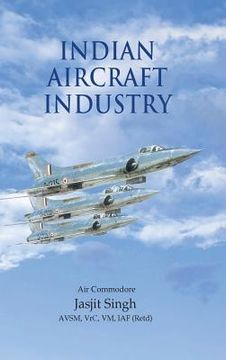Reseña del libro "Indian Aircraft Industry (en Inglés)"
Aviation came to India quite early, in fact a century ago, and an aircraft factory, Hindustan Aircraft Ltd., had been set up 70 years ago in Bangalore. But India, from its 25 percent share of global manufacturing in 1750, had been deindustrialised in the previous two centuries and its technological and economic capacity had been emasculated by the Raj. Hence, it had no industry, leave alone defence industry, to talk of at the time of independence. But by 1948, the first Indian design of a primary trainer, the HT-2, was started and soon, the licensed production of the first jet fighter, the Vampire, commenced at HAL. During the 15 years before the Sino-Indian War in 1962, HAL moved ahead rapidly, designing a number of light aircraft. It began the design of the jet trainer Kiran, and manufactured the famous Gnat fighter which acquired the reputation of "Sabre Killer" in the 1965 War with Pakistan. Above all, it started an ambitious project in 1956 to manufacture a multi-role combat aircraft, the HF-24 Marut, which turned out to be an outstanding design. Notwithstanding our inability to get an adequately powerful engine for it, three squadrons equipped with the aircraft served the country well in the 1971 War on the Western front. During the Nehru era, the aircraft industry rested on three strands of self-reliance: indigenous design and development, licensed manufacture, and outright import in some cases. Unfortunately, after the 1962 War, the need for expansion of the IAF led to enormous demands of modern aircraft of all types, and the country's defence needs were mostly met by licensed production of hundreds of fighter and transport aircraft and helicopters. We seemed to have become complacent (or incapable of professional thinking). In the process, the self-reliance model of three strands shrank to just two strands, with indigenous design and development, which is the most crucial element in creating autonomy in aircraft and other industrial enterprises, suffering a serious setback amounting to neglect for more than three decades. This has been changing during the past decade and new opportunities are opening up with a sustained high economic growth on one side and opening up of new sources of technology and arms on the other. But major institutional and structural reforms would be required to take advantage of the new opportunities. This volume by the country's leading defence expert, points out to the nature of these reforms after examining the Russian and Chinese experiences. This book is a must for military and industry professionals, students of defence, those interested in aviation and the general reader.

